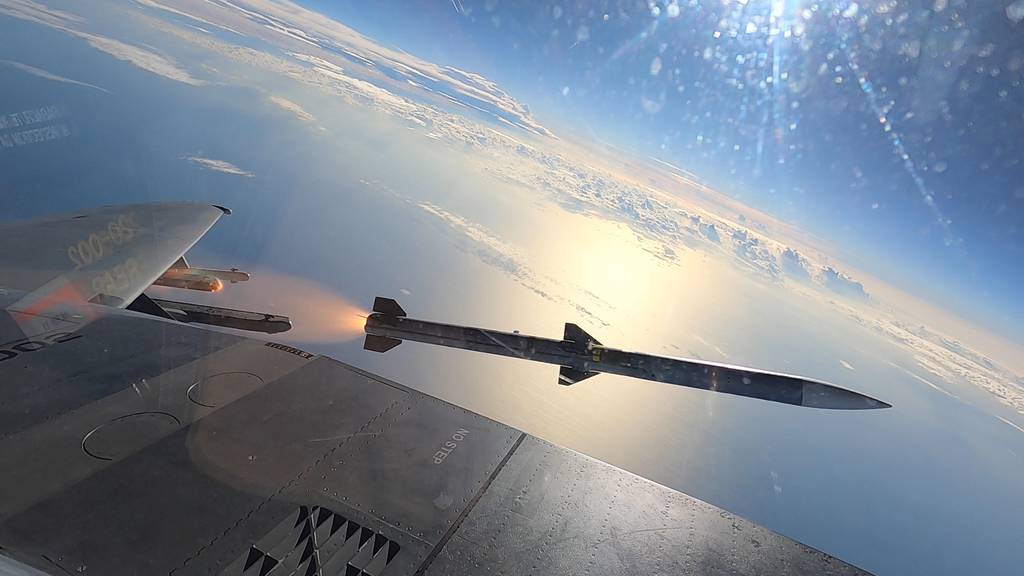
Congress early on Saturday passed the fiscal 2024 defense spending bill, nearly halfway through the fiscal year that began in October and hours after funding for the Defense Department and several other agencies expired on Friday.
The $825 billion bill will allow the Pentagon to launch the initiatives and begin the procurement of key weapons systems it had planned for this year. For more than five months, Congress had funded the Defense Department at FY23 levels via a series of stopgap measures, avoiding a government shutdown but hampering those initiatives and procurement plans.
“We made changes and decided on efforts that include countering China, developing next-generation weapons and investing in the quality of life of our service members,” House Appropriations Committee Chairwoman Kay Granger, R-Texas, said before the chamber’s vote. “I am proud to say this bill strengthens our national security and funds critical defense efforts.”
The House voted 286-134 to pass the bill as part of a broader appropriations package that adheres to spending caps imposed by last year’s debt ceiling deal. Granger, who is not running for reelection, announced shortly after the vote that she is stepping down as Appropriations chairwoman, anticipating another drawn-out budget process for FY25.
The Senate then passed the bipartisan spending package 74-24. President Joe Biden has committed to signing the bill.
The bill includes $33.5 billion to build eight ships and allocates funds for 86 F-35 and 24 F-15EX fighter jets as well as 15 KC-46A tankers. There’s also a combined $2.1 billion for the Army’s Long-Range Hypersonic Weapon and the Navy’s Conventional Prompt Strike hypersonic weapon system.
It also funds multiyear contracts to procure six critical munitions: the Naval Strike Missile, the Guided Multiple Launch Rocket System, the Patriot Advanced Capability-3, the Long Range Anti-Ship Missile, the Joint Air-to-Surface Standoff Missile and the Advanced Medium-Range Air-to-Air Missile.
Multiyear contracts are usually reserved for big-ticket purchases like ships and aircraft, but the Pentagon hopes using them for munitions will ensure demand stability, which in turn encourages defense contractors to ramp up production capacity. The American defense-industrial base has struggled to quickly replenish the billions of dollars worth of munitions drawn down from U.S. stockpiles for Ukraine.
The bill also includes $300 million for the Ukraine Security Assistance Initiative, which allows the Pentagon to place contracts for new equipment to send Kyiv. That amount is less than the $60 billion in security and economic support for Kyiv provided in the Senate’s foreign aid bill.
The Senate passed the aid bill for Ukraine, Israel and Taiwan in a 70-29 vote in February, but House Speaker Mike Johnson, R-La., has refused to put it to a floor vote amid opposition from former President Donald Trump, the presumptive Republican presidential nominee.
Johnson has also faced anger from the right flank of his caucus for working with Democrats to fund the government. Similar grievances prompted a small group of Republicans to instigate the ouster of his predecessor, former Speaker Kevin McCarthy, R-Calif., triggering three weeks of House dysfunction as the caucus struggled to select a new leader.
Rep. Marjorie Taylor Greene, R-Ga., filed a similar measure to oust Johnson shortly after the House passed the spending package. But it’s unclear whether she or anyone else in the caucus will actually trigger a vote to remove Johnson when Congress returns in April after a two-week recess. Putting a Ukraine aid package on the floor would likely anger Greene and other right-wing lawmakers.
Bryant Harris is the Congress reporter for Defense News. He has covered U.S. foreign policy, national security, international affairs and politics in Washington since 2014. He has also written for Foreign Policy, Al-Monitor, Al Jazeera English and IPS News.
- SEO Powered Content & PR Distribution. Get Amplified Today.
- PlatoData.Network Vertical Generative Ai. Empower Yourself. Access Here.
- PlatoAiStream. Web3 Intelligence. Knowledge Amplified. Access Here.
- PlatoESG. Carbon, CleanTech, Energy, Environment, Solar, Waste Management. Access Here.
- PlatoHealth. Biotech and Clinical Trials Intelligence. Access Here.
- Source: https://www.defensenews.com/congress/budget/2024/03/23/congress-passes-defense-spending-bill-after-months-of-delays/
- :has
- :is
- :not
- $UP
- 1
- 12
- 15%
- 2014
- 2024
- 24
- 5
- 70
- a
- actually
- advanced
- Affairs
- After
- agencies
- Aid
- air-to-air
- aircraft
- AL
- allocates
- allow
- allows
- also
- am
- American
- Amid
- amount
- and
- anger
- announced
- Another
- anticipating
- anyone
- appropriations
- April
- ARE
- AS
- Assistance
- At
- avoiding
- base
- before
- began
- begin
- biden
- Bill
- Billion
- billions
- bipartisan
- broader
- budget
- build
- but
- by
- Capacity
- caps
- ceiling
- Changes
- China
- combined
- committed
- committee
- Congress
- contractors
- contracts
- conventional
- countering
- covered
- critical
- Debt
- decided
- Defense
- Defense Department
- delays
- Demand
- Democrats
- Department
- developing
- dollars
- donald
- Donald Trump
- down
- drawn
- drawn down
- dysfunction
- Early
- Economic
- efforts
- eight
- else
- encourages
- English
- ensure
- equipment
- Ether (ETH)
- faced
- February
- filed
- Fiscal
- five
- Floor
- For
- foreign
- foreign policy
- Former
- Friday
- from
- fund
- funded
- funding
- funds
- Government
- Group
- guided
- had
- halfway
- he
- his
- hopes
- HOURS
- House
- HTTPS
- images
- imposed
- in
- include
- includes
- Initiative
- initiatives
- International
- investing
- Israel
- IT
- Jets
- joe
- Joe Biden
- Johnson
- joint
- jpg
- kay
- Key
- launch
- lawmakers
- less
- levels
- Life
- like
- likely
- Long
- made
- measure
- Members
- mike
- million
- months
- more
- multiple
- multiyear
- National
- national security
- nearly
- New
- news
- next-generation
- october
- of
- on
- opposition
- or
- Other
- our
- package
- part
- pass
- passed
- passes
- pentagon
- Place
- planned
- plans
- plato
- Plato Data Intelligence
- PlatoData
- policy
- politics
- predecessor
- president
- President Donald Trump
- president joe biden
- presidential
- process
- procure
- procurement
- Production
- proud
- provided
- purchases
- put
- Putting
- quality
- Ramp
- range
- remove
- replenish
- reporter
- Republican
- Republicans
- reserved
- returns
- right
- rocket
- running
- s
- Said
- say
- security
- select
- Senate
- Series
- service
- several
- she
- ships
- Shortly
- shutdown
- signing
- similar
- since
- SIX
- small
- Speaker
- Spending
- stepping
- Strengthens
- strike
- support
- system
- Systems
- Taiwan
- taylor
- than
- that
- The
- the joint
- Them
- then
- this
- this year
- those
- three
- Through
- to
- trigger
- triggering
- trump
- TURN
- u.s.
- Ukraine
- unclear
- using
- usually
- Vote
- voted
- washington
- Weapons
- Weeks
- WELL
- when
- whether
- which
- WHO
- will
- with
- working
- worth
- would
- written
- year
- zephyrnet











